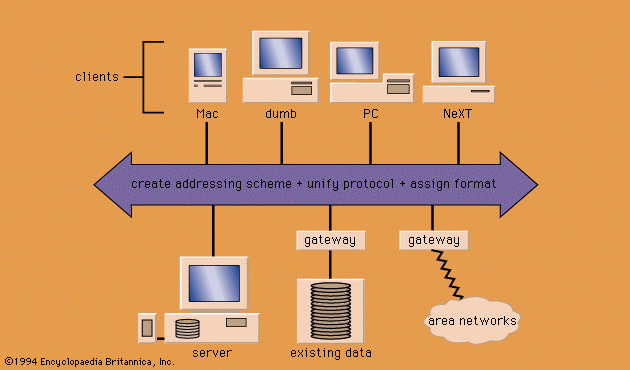
What is a computer network?

"How long is a piece of string?" is about as good a starting point as any for describing what a computer network is. In effect it's whatever you want or need it to be, but basically it's where two or more computers have the ability to communicate with each other.
Maybe the simplest type of computer network is one where two PC's are linked together via a single piece of cable. Using Windows 98, for example, it is possible to 'link' or network two PC's together using DCC (Direct Cable Connection) software via the serial (usually used for connecting an external modem) or parallel (usually used for connecting a printer) ports.
There are also what is known as 'peer-to-peer' networks. Peer-to-peer networks are where a small number of computers (under a dozen, say) are linked together via some cabling into a single functioning computer-to-computer loop. Using Windows 95/98, for example, this is a simple and cost effective way for a small number of computers in the same office to be able to share resources (like access to a printer). While cheap and cheerful, peer-to-peer networking does fall down on speed/bandwidth capabilities, limitations on application sharing and a dependency on all computers in the loop being switched on and functioning OK.
Then there's the Local Area Network (LAN). This might, for example, extend beyond a single office environment to linking together several offices/departments in a large building. Things become a little more complicated, however. Such a network would most probably need a server (a computer that acts as storage place and go-between for linked-in user computers), hubs (connecting boxes), data transfer cards (Ethernet cards being one of the most common) and special software to allow the server, user computers and programs/applications to 'speak' to each other. Windows NT Server or Novell Netware are types of server software.
A step up from the LAN is the WAN. WAN stands for Wide Area Network and commonly links computers distributed across a wide geographical location. For example, a company in New York might have a WAN to connect to its offices in Delhi. Running and maintaining WAN's can become complex and resource intensive as each WAN may have a number of different computers using a number of different operating systems using a number of different servers (i.e. a number of different LAN's within the WAN).
Just as things in the computing world were beginning to get complicated in steps a piece of magic called TCP/IP (Transmission Control Protocol/Internet Protocol). What is really magical about TCP/IP is that it is a 'language' or protocol which any computer using any operating system can use to communicate with any other computer using any other operating system. Ever heard of the internet? Well, the internet runs on the TCP/IP protocol.